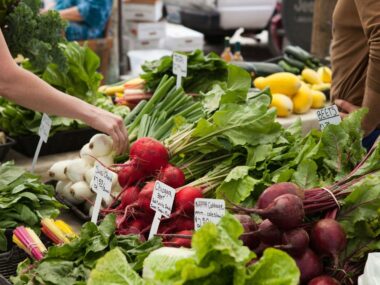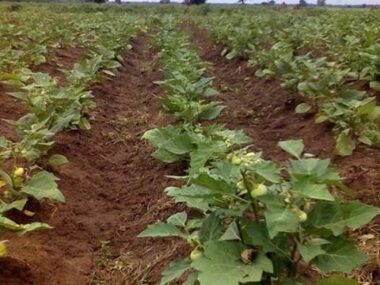Introduction:
In the face of escalating environmental challenges and increasing demand for food, agroforestry emerges as a beacon of hope—a holistic approach that integrates trees, crops, and livestock within a unified agricultural system. Rooted in traditional practices and bolstered by modern innovations, agroforestry embodies the principles of sustainability, resilience, and biodiversity conservation. In this comprehensive discourse, we delve into the multifaceted realm of agroforestry, exploring its principles, practices, benefits, and profound implications for global food security and environmental stewardship.

- Understanding Agroforestry:
At its essence, agroforestry represents a dynamic interplay between agriculture and forestry, where trees are intentionally integrated into farming landscapes to enhance productivity, ecological resilience, and socio-economic well-being. Unlike conventional monoculture systems, which often lead to soil degradation, biodiversity loss, and resource depletion, agroforestry embodies a harmonious blend of diverse species, fostering synergistic relationships and multifunctional landscapes. - Key Components of Agroforestry:
- Trees: Trees serve as the cornerstone of agroforestry systems, offering a myriad of ecological, economic, and social benefits. Beyond their role in timber production, trees provide essential ecosystem services such as soil stabilization, water regulation, carbon sequestration, and habitat provision for wildlife. Moreover, tree species diversity enriches agroecosystems, fostering resilience against pests, diseases, and climate variability.
Crops: Agroforestry integrates various agricultural crops alongside trees, capitalizing on complementary relationships to optimize resource utilization and enhance productivity. Crop diversity not only diversifies income streams for farmers but also mitigates the risks associated with market fluctuations and climate extremes. Furthermore, intercropping within tree canopies or alley cropping between tree rows maximizes land use efficiency without compromising yields.
Livestock: Livestock integration represents another dimension of agroforestry, where grazing animals coexist with trees and crops in a symbiotic manner. Silvo pastoral systems, for instance, combine forage production with tree cover, offering shade, fodder, and shelter for livestock while mitigating soil erosion and nutrient runoff. By mimicking natural grazing patterns, agroforestry enhances animal welfare, reduces feed costs, and promotes soil fertility.
Types of Agroforestry Systems: - Agroforestry Alley Cropping: This system involves planting rows of trees spaced apart to create alleys for cultivating crops in between. Alley cropping optimizes land use efficiency, enhances soil fertility, and provides opportunities for diversified crop production.
Silvo pastoral Systems: Silvo pastoral agroforestry integrates trees, forages, and livestock grazing, fostering synergies between agricultural and forestry activities. By balancing forage production, tree cover, and animal husbandry, Silvo pastoral systems promote sustainable land management and enhance livestock productivity.
Forest Gardens: Forest gardens, also known as food forests or agroforestry gardens, emulate natural forest ecosystems by incorporating multiple layers of vegetation, including trees, shrubs, vines, and herbaceous plants. These diverse landscapes provide a rich array of food, fiber, fuel, and medicinal resources while enhancing ecological resilience and biodiversity conservation.
Benefits of Agroforestry: - Environmental Sustainability: Agroforestry mitigates climate change by sequestering carbon in trees and enhancing soil organic matter, thereby contributing to climate resilience and adaptation. Moreover, agroforestry reduces deforestation pressures, conserves biodiversity, and improves water quality through enhanced soil infiltration and nutrient cycling.
Economic Viability: Agroforestry diversifies income streams for farmers, reducing reliance on single crops and volatile markets. By integrating multiple sources of revenue—such as timber, fruits, nuts, and livestock—agroforestry enhances farm profitability and socio-economic resilience, particularly for smallholder farmers in developing countries.
Soil Health and Fertility: Agroforestry promotes soil conservation and fertility through increased organic matter, nutrient cycling, and erosion control. Tree roots stabilize soils, prevent erosion, and enhance water infiltration, thereby mitigating the impacts of droughts and floods.
Social Benefits: Agroforestry strengthens community resilience, fosters local food security, and preserves traditional knowledge and cultural heritage. Moreover, agroforestry empowers marginalized groups, including women and indigenous communities, by providing opportunities for income generation, skill development, and social cohesion.
Challenges and Considerations:
Despite its numerous benefits, agroforestry faces various challenges and considerations: - Knowledge and Awareness: Scaling up agroforestry requires education, training, and awareness-raising among farmers, policymakers, and stakeholders to promote adoption and investment in sustainable land management practices.
Policy and Institutional Support: Agroforestry requires supportive policies, incentives, and institutional frameworks that recognize its contributions to sustainable development and provide enabling environments for implementation.
Market Access and Value Chains: Agroforestry products often face challenges in accessing markets, processing facilities, and value chains, necessitating investments in infrastructure, market linkages, and value-added processing.
Conclusion:
As humanity stands at a crossroads of environmental degradation and food insecurity, agroforestry offers a pathway forward—a regenerative approach that harmonizes agricultural production with ecological restoration and socio-economic development. By embracing the principles of diversity, synergy, and stewardship, we can cultivate landscapes that nourish both people and planet, fostering resilience, equity, and abundance for generations to come. In the tapestry of agroforestry, we find not only sustenance but also hope—a living testament to the transformative power of integrated, holistic approaches to farming and forestry.










